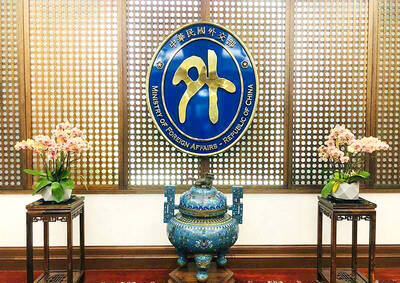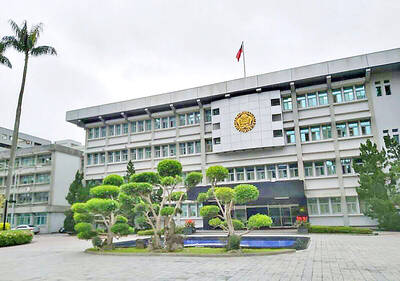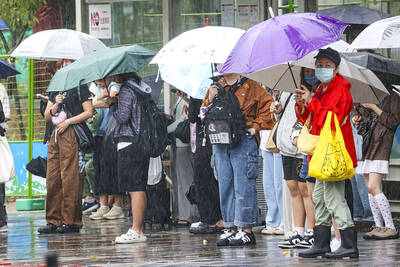Transportation researchers on Thursday criticized giving sales tax breaks to motorcycle and car buyers, saying it was confusing the public about the government’s public transportation policy.
The legislature’s Finance Committee approved on Monday an amendment to Section 1 of Article 12 in the Commodity Tax Act (貨物稅條例). Those purchasing passenger and cargo motor vehicles that are below 2,000 cylinder capacity this year are entitled to a sales tax break of NT$30,000 per vehicle. Motorcycle buyers also get a sales tax break of NT$3,000.
CONSERVING ENERGY
Chang Sheng-hsiung (張勝雄), an assistant professor at Tamkang University’s Transportation Management Department, said the government had asked the public to conserve energy and reduce carbon dioxide emissions when oil prices were skyrocketing last summer. Because of this, public transportation users increased by 30 percent around that time.
However, the government did not enforce the same policy when oil prices slid toward the end of last year and instead chose to subsidize car and motorcycle buyers.
“Every year, the government has to give public transportation service providers approximately NT$800 million [US$24.1 million] in subsidies to help fund their operations, which has already been a burden to the nation,” he said at a seminar organized by the Taipei Traffic and Culture Foundation.
“But the government now wants to spend NT$9 billion funding the car buyers. You wonder what the government’s public transportation policy is, exactly,” Chang said.
LOSSES
Huang Tai-sheng (黃台生), an ssociate professor at the institute of traffic and transportation at National Chiao Tung University, told the same seminar that rising oil prices led to huge financial losses for the transportation sector.
As oil prices are expected to fluctuate more frequently than before, the government has to be aware of its impact on the public transportation industry and how it affects consumers, he said.

The German city of Hamburg on Oct. 14 named a bridge “Kaohsiung-Brucke” after the Taiwanese city of Kaohsiung. The footbridge, formerly known as F566, is to the east of the Speicherstadt, the world’s largest warehouse district, and connects the Dar-es-Salaam-Platz to the Brooktorpromenade near the Port of Hamburg on the Elbe River. Timo Fischer, a Free Democratic Party member of the Hamburg-Mitte District Assembly, in May last year proposed the name change with support from members of the Social Democratic Party and the Christian Democratic Union. Kaohsiung and Hamburg in 1999 inked a sister city agreement, but despite more than a quarter-century of

The Ministry of Foreign Affairs (MOFA) yesterday expressed “grave concerns” after Singaporean Prime Minister Lawrence Wong (黃循財) reiterated the city-state’s opposition to “Taiwanese independence” during a meeting with Chinese Premier Li Qiang (李強). In Singapore on Saturday, Wong and Li discussed cross-strait developments, the Singaporean Ministry of Foreign Affairs said in a statement. “Prime Minister Wong reiterated that Singapore has a clear and consistent ‘one China’ policy and is opposed to Taiwan independence,” it said. MOFA responded that it is an objective fact and a common understanding shared by many that the Republic of China (ROC) is an independent, sovereign nation, with world-leading

The Ministry of Justice Investigation Bureau (MJIB) has been investigating nine shell companies working with Prince Holding Group, and the Taipei District Prosecutors’ Office is seeking further prosecution of alleged criminals, a source said yesterday. The nine companies and three Taiwanese nationals were named by the US Department of the Treasury’s Office of Foreign Assets Control (OFAC) on Oct. 14 as Specially Designated Nationals as a result of a US federal court indictment. Prince Holding founder Chen Zhi (陳志) has been charged with fraud, conspiracy, money laundering and overseeing Prince Holding’s suspected forced-labor camps in Cambodia, the indictment says. Intelligence shared between Taiwan,

COOLING OFF: Temperatures are expected to fall to lows of about 20°C on Sunday and possibly 18°C to 19°C next week, following a wave of northeasterly winds on Friday The Central Weather Administration (CWA) on Sunday forecast more rain and cooler temperatures for northern Taiwan this week, with the mercury dropping to lows of 18°C, as another wave of northeasterly winds sweeps across the country. The current northeasterly winds would continue to affect Taiwan through today, with precipitation peaking today, bringing increased rainfall to windward areas, CWA forecaster Liu Pei-teng (劉沛滕) said. The weather system would weaken slightly tomorrow before another, stronger wave arrives on Friday, lasting into next week, Liu said. From yesterday to today, northern Taiwan can expect cool, wet weather, with lows of 22°C to 23°C in most areas,